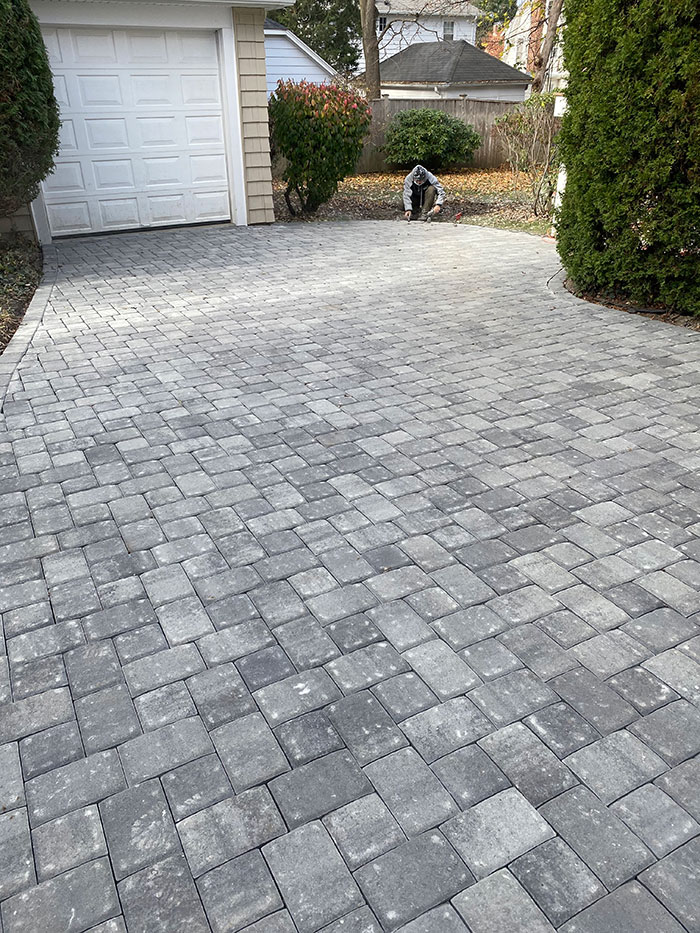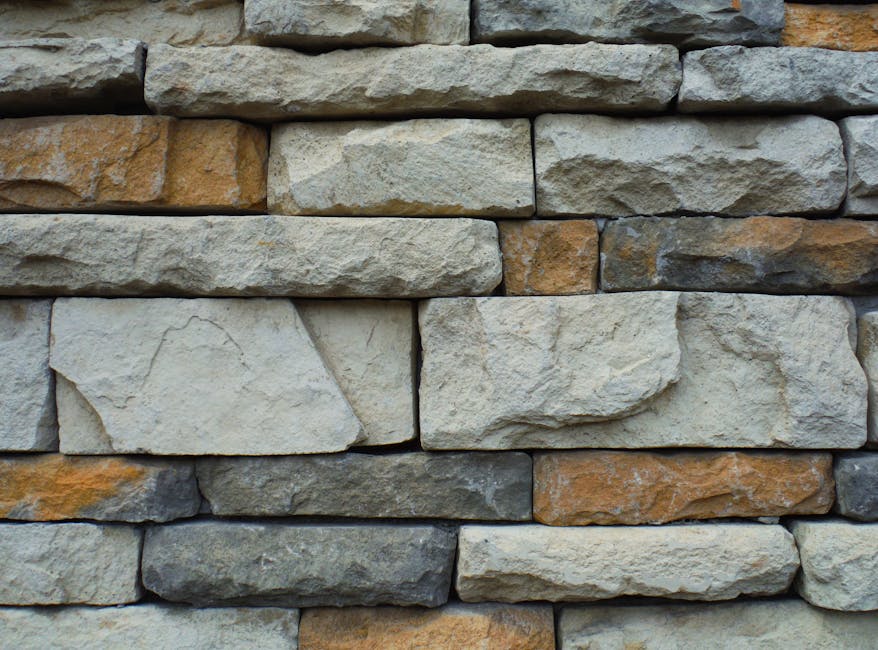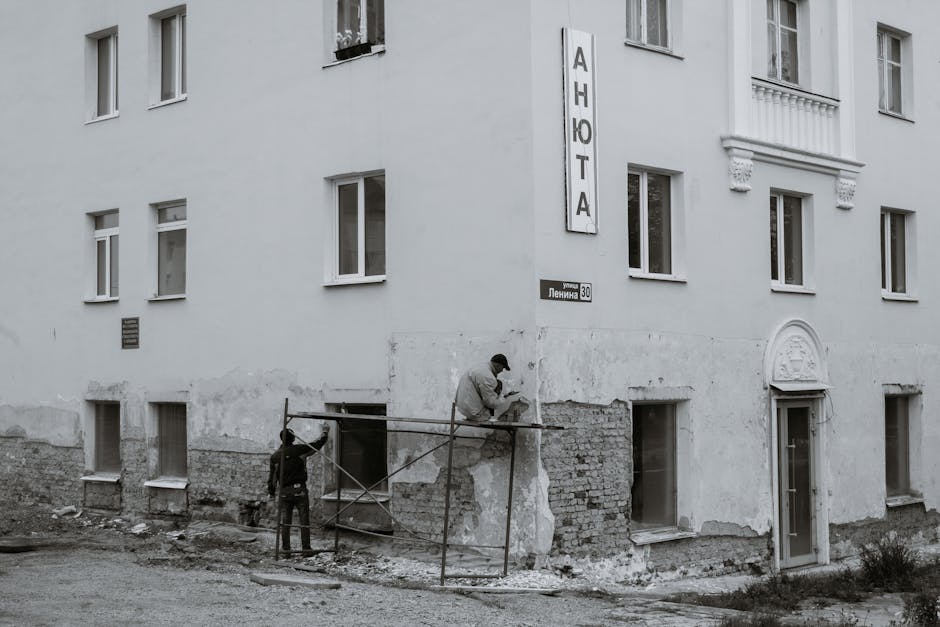Brick Repair Near Me: Top 5 Reliable Services in 2024
Introduction
If you’re searching for brick repair near me, you’ve come to the right place. Brick repair is a critical service to maintain the structural integrity and aesthetic appeal of your property.
- Structural Integrity: Damaged bricks can affect the stability of your home or building.
- Aesthetic Appeal: Well-maintained brickwork enhances the beauty and value of your property.
- Property Safety: Cracks and loose bricks can pose safety risks.
Understanding the importance of brick repair can save you from bigger problems down the road. Whether it’s due to discolored bricks, mortar damage, or water damage, knowing the basics will help you make informed decisions.
Understanding Brick Repair
What is Brick Repair?
Brick repair is the process of fixing damaged or deteriorating bricks to restore the structural integrity and appearance of a building. This process can involve several steps, including removing and replacing damaged bricks, filling in cracks, and reinforcing the mortar that holds the bricks together.
Tools and Materials: Common tools used in brick repair include trowels, hammers, chisels, and power washers. Materials often include new bricks, mortar, caulking, and sealants.
Process: The repair process usually starts with an assessment to identify the extent of the damage. Damaged bricks are then removed and replaced. Cracks are filled with mortar or caulking, and the area is cleaned to ensure a uniform appearance.
Common Causes of Brick Damage
Understanding what causes brick damage can help you take preventive measures. Here are some common factors:
Environmental Factors: Bricks are exposed to various environmental elements like rain, snow, and extreme temperatures. Over time, these elements can cause bricks to deteriorate. For instance, frost boil occurs when frozen, moist earth expands, pushing against your building’s foundation and weakening it structurally.
Water Damage: Water can seep into the porous surface of bricks, causing them to crack and break. In a rainy climate, water damage can be a significant problem. Bowed bricks are a common issue caused by water damage and require urgent masonry repair.
Mortar Deterioration: Mortar holds bricks together, but it can wear away over time. This can lead to loose bricks and weakened structures. Tuckpointing is a common method used to repair deteriorating mortar.
Physical Impact: Physical impacts from accidents or construction activities can also damage bricks. This might involve anything from minor chips to major cracks that compromise the structure’s integrity.
By understanding these common causes, you can better maintain your brickwork and address issues before they become severe.
Top Brick Repair Services
Tuckpointing
Tuckpointing is a specialized process used to repair deteriorating mortar joints between bricks. It involves removing the old, damaged mortar and replacing it with fresh mortar that closely matches the original in both color and texture. This method is essential for maintaining the structural integrity and aesthetic appeal of brickwork.
Process:
1. Assessment: Inspect the mortar joints to identify areas that need repair.
2. Removal: Use tools like a chisel or a mortar raking tool to remove the old, damaged mortar.
3. Mixing: Prepare a new batch of mortar that matches the original in color and texture.
4. Application: Fill the joints with new mortar using a joint filler tool.
5. Finishing: Smooth the new mortar with a jointing tool to ensure a seamless look.
Benefits:
– Structural Integrity: Reinforces the bond between bricks, preventing further damage.
– Aesthetic Appeal: Restores the original look of the brickwork.
– Cost-Effective: Cheaper than replacing entire sections of brickwork.
Cost: Tuckpointing typically costs between $5 and $25 per square foot, depending on the complexity and accessibility of the project.
Brick Replacement
When bricks are too damaged to repair, brick replacement becomes necessary. This process involves removing the damaged bricks and replacing them with new ones that match the existing structure.
When to Replace:
– Severe Cracks: Large cracks that compromise structural integrity.
– Chipping: Extensive chipping that affects the brick’s appearance and function.
– Water Damage: Bricks that have absorbed too much moisture and are crumbling.
Process:
1. Assessment: Identify which bricks need to be replaced.
2. Removal: Carefully remove the damaged bricks without affecting the surrounding ones.
3. Matching: Source new bricks that match the existing ones in color, size, and texture.
4. Installation: Install the new bricks and secure them with fresh mortar.
Cost: The cost of brick replacement varies but generally ranges from $20 to $40 per square foot.
Mortar Repair
Mortar repair is crucial for maintaining the stability of brick structures. Over time, mortar can deteriorate, leading to loose bricks and potential structural issues.
Importance:
– Stability: Keeps bricks securely in place.
– Waterproofing: Prevents water from seeping into the structure.
– Aesthetic: Maintains the uniform look of the brickwork.
Process:
1. Inspection: Check for deteriorating or missing mortar.
2. Removal: Use a chisel or mortar raking tool to remove the old mortar.
3. Mixing: Prepare new mortar that matches the original.
4. Application: Fill the gaps with new mortar using a joint filler tool.
5. Smoothing: Finish with a jointing tool to ensure a smooth, consistent look.
Tools and Materials:
– Chisel
– Mortar raking tool
– Joint filler tool
– Jointing tool
– Fresh mortar mix
Waterproofing
Waterproofing is essential for protecting brick structures from moisture damage. Bricks are porous and can absorb water, leading to deterioration over time.
Importance:
– Prevents Water Damage: Stops water from seeping into the bricks and mortar.
– Increases Longevity: Extends the life of the brickwork.
– Maintains Appearance: Keeps bricks looking clean and new.
Process:
1. Cleaning: Thoroughly clean the brick surface to remove dirt and grime.
2. Inspection: Check for any existing damage that needs repair before waterproofing.
3. Application: Apply a water sealant or repellent to the bricks and mortar.
4. Drying: Allow the sealant to dry completely before exposing the brickwork to moisture.
Sealants and Frequency:
– Types: Silicone-based sealants, acrylic sealants, and silane-siloxane sealants.
– Frequency: Reapply every 5-7 years for optimal protection.
By understanding these top brick repair services, you can better maintain your brick structures and ensure their longevity.
Next, we’ll explore the differences between DIY and professional brick repair services to help you decide the best approach for your needs.
DIY vs Professional Brick Repair
When to DIY
DIY brick repair can be a practical choice for small, uncomplicated tasks. If you have minor issues like chipped bricks or small cracks, handling the repair yourself can save time and money.
Tools Needed:
– Trowel
– Chisel
– Hammer
– Wire brush
– Mortar mix
– Safety gear (gloves, goggles)
Step-by-Step Guide:
1. Preparation: Clean the damaged area using a wire brush to remove any loose debris.
2. Chiseling: Use a chisel and hammer to remove the damaged mortar or brick pieces carefully.
3. Mix Mortar: Follow the instructions on the mortar mix package to prepare the mortar.
4. Apply Mortar: Use a trowel to apply the mortar to the cleaned area.
5. Replace Brick: Insert a new brick or fill the crack with the mortar, ensuring it’s level with the surrounding bricks.
6. Curing: Allow the mortar to cure as per the instructions, typically around 24-48 hours.
Pros of DIY:
– Cost-effective for minor repairs.
– Immediate fix without scheduling a contractor.
– Sense of accomplishment.
Cons of DIY:
– Risk of improper repair leading to further damage.
– Requires time and effort.
– Limited to small, non-structural repairs.
When to Hire Professionals
For large repairs, structural issues, or work on historical buildings, hiring a professional is the best option. Expert masons have the skills and knowledge to handle complex repairs and ensure the structural integrity of your building.
Professional Services:
– Structural brick repair
– Tuckpointing
– Repointing
– Brick replacement
– Waterproofing
Pros of Hiring Professionals:
– Expertise: Professionals have the experience and tools needed for high-quality repairs.
– Safety: Ensures the structural safety of your building.
– Efficiency: Faster and more efficient than DIY, especially for large projects.
– Warranty: Many contractors offer warranties on their work.
Cons of Hiring Professionals:
– Cost: Professional services can be expensive, especially for large projects.
– Scheduling: May need to schedule and wait for availability.
Cost Comparison:
– DIY: Costs are limited to materials and tools, which can be relatively inexpensive for small repairs.
– Professional: Costs vary based on the size and complexity of the repair. For example, tuckpointing can range from $5 to $25 per square foot, while extensive brick replacement or structural repairs can be significantly higher.
In summary, while DIY brick repair is suitable for minor fixes, professional services are essential for more significant, complex issues to ensure durability and safety.
Next, we’ll discuss how to choose the best brick repair service near you, including evaluating experience, licenses, and comparing costs.
How to Choose the Best Brick Repair Service Near Me
Choosing a brick repair service can feel overwhelming. Here’s a simple guide to help you find the best contractor for your needs.
Evaluating Experience and Expertise
Experience matters. Look for companies with years of experience in brick repair. An established company is more likely to provide high-quality work.
- Years in business: A company with a long history has likely handled many types of projects and challenges.
- Types of projects: Ask about the kinds of projects they’ve completed. Have they worked on buildings similar to yours?
- Customer reviews: Check online reviews. Look for feedback about the quality of their work and customer service. For example, one satisfied customer said, “The sealant looks good, and we’re happy with the work.”
Checking Licenses and Insurance
Licenses and insurance are crucial. They protect you and ensure the contractor is qualified.
- Importance: Licensed contractors meet industry standards and regulations. Insurance protects you from liability in case of accidents.
- What to look for: Verify that the contractor is licensed and insured. Ask for their license number and proof of insurance.
- Verifying credentials: You can often verify licenses online through local government websites.
Comparing Costs
Get multiple quotes. This helps you understand the market rate and choose a service within your budget.
- Getting multiple quotes: Contact several contractors for estimates. Make sure the estimates are detailed and include all costs.
- Understanding pricing: Ask for a breakdown of costs. This can include labor, materials, and any additional fees.
- Hidden fees: Be wary of hidden fees. Ask if there are any extra charges that might come up during the project.
By following these steps, you can find a reliable brick repair service that meets your needs and budget. Next, we’ll answer some frequently asked questions about brick repair.
Frequently Asked Questions about Brick Repair Near Me
Can damaged bricks be repaired?
Yes, damaged bricks can be repaired. Small repairs are often manageable with the right tools and materials. Here’s a quick rundown:
Tools Needed:
– Hammer and chisel
– Wire brush
– Trowel
– Pointing tool
Materials Needed:
– Replacement bricks (if necessary)
– Mortar mix
– Water
Process:
1. Assess the damage: Determine if the brick is cracked, chipped, or loose.
2. Remove damaged brick: Use a hammer and chisel to carefully remove the damaged brick.
3. Clean the area: Clear out old mortar using a wire brush.
4. Prepare new mortar: Mix the mortar according to the instructions.
5. Insert new brick: Place the new brick into the cleaned space and apply mortar around it.
6. Smooth out mortar: Use a pointing tool to smooth and shape the mortar joints.
How do you repair exterior brick?
Repairing exterior brick involves a few more steps to ensure durability against weather conditions. Here’s a step-by-step guide:
Tools Needed:
– Pressure washer or scrub brush
– Trowel
– Pointing tool
– Hammer and chisel
– Wire brush
Materials Needed:
– Replacement bricks (if needed)
– Mortar mix
– Sealant
Process:
1. Clean the surface: Use a pressure washer or scrub brush to remove dirt and debris.
2. Remove damaged bricks: Use a hammer and chisel to take out any broken or loose bricks.
3. Clean the area: Clear out old mortar with a wire brush.
4. Mix new mortar: Follow the instructions to prepare the mortar mix.
5. Insert new bricks: Place new bricks into the cleaned spaces and apply mortar around them.
6. Smooth mortar: Use a pointing tool to smooth the mortar joints.
7. Apply sealant: Once the mortar is dry, apply a waterproof sealant to protect the bricks from moisture.
Can chipped bricks be repaired?
Chipped bricks can often be repaired without needing full replacement. Here are some repair options:
Tools Needed:
– Hammer and chisel (if removing any loose pieces)
– Wire brush
– Trowel
Materials Needed:
– Mortar mix or brick repair compound
– Water
Process:
1. Clean the area: Use a wire brush to remove any loose fragments and debris.
2. Prepare repair compound: Mix the mortar or brick repair compound.
3. Apply the compound: Fill the chipped area with the repair compound using a trowel.
4. Shape and smooth: Use the trowel to smooth out the surface and match the shape of the existing brick.
5. Allow to dry: Let the repair compound cure according to the manufacturer’s instructions.
By following these steps, you can effectively repair damaged, exterior, or chipped bricks, ensuring your brickwork remains both structurally sound and visually appealing.
Conclusion
Brick repair is essential for maintaining the structural integrity and aesthetic appeal of any brick structure. Whether dealing with mortar damage, loose bricks, or water damage, addressing these issues promptly can prevent further deterioration and costly repairs down the line.
Professional services are particularly important when it comes to more complex repairs or historical buildings. The expertise of a skilled mason ensures that the repair work not only looks good but also lasts for years. For example, tuckpointing is a meticulous process that requires precision to match the existing mortar, while brick replacement necessitates finding and installing bricks that blend seamlessly with the old ones.
Marchi Paving Inc. stands out as a reliable choice for all your masonry needs. With experience in brick repair, tuckpointing, and waterproofing, we ensure that your brickwork is both beautiful and durable. Our team of skilled masons is committed to providing top-notch service, using the highest quality materials and the latest techniques.
For more information or to get started with a free consultation, visit our Masonry Services page or contact us directly at 617-964-9999. We’re here to help you with all your brick repair needs, ensuring your property remains in excellent condition.
By choosing professional services like those offered by Marchi Paving Inc., you can rest assured that your brick repair project will be handled with the utmost care and expertise. Contact us today to learn more about how we can help you maintain and restore your brick structures.





